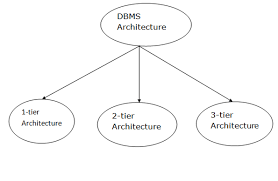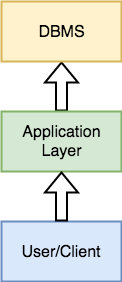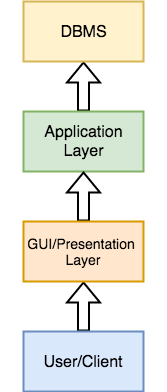DBMS ARCHITECTURE
- The Tech Platform

- Oct 23, 2020
- 2 min read
Database architecture uses programming languages to design a particular type of software for businesses or organizations. Database architecture focuses on the design, development, implementation and maintenance of computer programs that store and organize information for businesses, agencies and institutions. A database architect develops and implements software to meet the needs of users.
The design of a DBMS depends on its architecture. It can be centralized or decentralized or hierarchical.
The architecture of a DBMS can be seen as either single tier or multi-tier. The tiers are classified as follows :
1 -tier Architecture
2. tier Architecture
3-tier Architecture
1-tier Architecture
In this type of architecture, the database is readily available on the client machine, any request made by client doesn’t require a network connection to perform the action on the database. Any changes done here will directly be done on the database itself. It doesn't provide a handy tool for end users. The 1-Tier architecture is used for development of the local application, where programmers can directly communicate with the database for the quick response.
2-tier Architecture
The 2-Tier architecture is same as basic client-server. In the two-tier architecture, applications on the client end can directly communicate with the database at the server side. For this interaction, API's like: ODBC, JDBC are used. The user interfaces and application programs are run on the client-side.
The server side is responsible to provide the functionalities like: query processing and transaction management. To communicate with the DBMS, client-side application establishes a connection with the server side.
2-tier DBMS architecture includes an Application layer between the user and the DBMS, which is responsible to communicate the user's request to the database management system and then send the response from the DBMS to the user.
An application interface known as ODBC(Open Database Connectivity) provides an API that allow client side program to call the DBMS. Most DBMS vendors provide ODBC drivers for their DBMS.
3-tier Architecture
A 3-tier architecture separates its tiers from each other based on the complexity of the users and how they use the data present in the database. It is the most widely used architecture to design a DBMS.
Database (Data) Tier − At this tier, the database resides along with its query processing languages. We also have the relations that define the data and their constraints at this level.
Application (Middle) Tier − At this tier reside the application server and the programs that access the database. For a user, this application tier presents an abstracted view of the database. End-users are unaware of any existence of the database beyond the application. At the other end, the database tier is not aware of any other user beyond the application tier. Hence, the application layer sits in the middle and acts as a mediator between the end-user and the database.
User (Presentation) Tier − End-users operate on this tier and they know nothing about any existence of the database beyond this layer. At this layer, multiple views of the database can be provided by the application. All views are generated by applications that reside in the application tier.
Multiple-tier database architecture is highly modifiable, as almost all its components are independent and can be changed independently.
Sofia Sondh
The Tech Platform









Comments